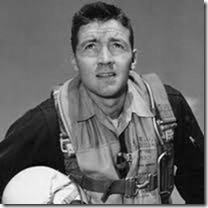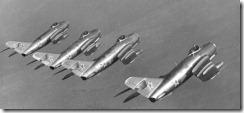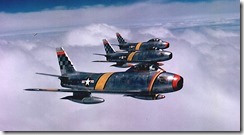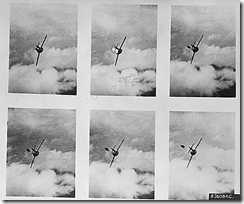Warning: Arcane esoteria follows.
A while back, Steve Spear put on a webinar about problem solving.
A key theme in the early part of Spear’s presentation was about a company that realized a need to be able to cope with ever accelerating changes. My notes captured this as:
We no longer do high volume manufacturing..
We do high volume engineering.
The design process is on a ramp-up.
In other words, in the context of this product development cycle, they needed to shift their thinking. They are mass-producing designs, not products. They need to be able to not only get the designs out, but get those designs into production and to the market with faster and faster transitions from one product to the next.
This meant that they were never in a steady state. Rather, the normal state was transition.
Everything in our world is accelerating. Our organizations must become very quick at adopting to new products, new technology, and process changes as a matter of routine.
We are living in a world where it isn’t so much what we know that gives us an edge, but how fast we can figure out the meaning of what is new.
This idea of faster and faster transients is not new to me, and I wanted to share some thoughts and background from a previous line of work that is technically out of the realm of “lean.”
Transient back in time: Korea: MiG Alley – 1952
Flying a MiG-15 in the Korean War was a very dangerous business indeed. The front line U.S. fighter was the F-86, and they were shooting down MiG-15s in a 10:1 ratio.
But that statistic beguiled analysis. By nearly all objective measures, the MiG-15 has a decisive advantage in a dogfight. It was lighter and more nimble. It could fly faster, out climb, out gun, and out-turn an F-86.
Fighter pilots being what they are, the original assessment was better piloting skills. And, overall, that was likely true. U.S. pilots, at least the more senior ones, were combat veterans from WWII. But many MiG pilots were combat veterans as well – especially the Russian ones.
No, while piloting skill could account for some of the difference, the mystery remained.
John R. Boyd
 John Boyd (1927-1997) was a fighter pilot with no aerial victories. Yet he is acknowledged as one of the greatest fighter pilots in history. His contributions to the theory of aerial warfare are the anchor for training every fighter pilot in the world today. His theories are used to evaluate every fighter aircraft design.
John Boyd (1927-1997) was a fighter pilot with no aerial victories. Yet he is acknowledged as one of the greatest fighter pilots in history. His contributions to the theory of aerial warfare are the anchor for training every fighter pilot in the world today. His theories are used to evaluate every fighter aircraft design.
As he was developing his breakthrough Energy-Maneuverability Theory, the MiG-15 / F-86 victory ratio did not fit his equations. In other words, he was faced with observation that did not fit his theory.
What was the advantage held by the F-86 that made it so formidable?
Though the MiG is physically smaller, the two aircraft are actually very similar looking. But there are some crucial differences in the design.
The F-86 has a large bubble canopy. Pilot visibility is unobstructed, superb. The MiG-15’s canopy is more conventional. It has frames, is smaller, and does not extend as low as its F-86 counterpart. This translates to the F-86 pilot being able to see more, see better. He is less likely to miss a spec that is behind a canopy frame. He can see better beneath him, and to his rear. Thus, he can begin to set up his next move just a little sooner than his opponent in a MiG-15.
The F-86 has hydraulically boosted controls. The F-86 pilot does not have to use his muscle power against the aerodynamic forces on the control surfaces. He can effortlessly move the stick, and the elevators and ailerons respond.
The MiG-15, on the other hand, requires muscle power. It is physically harder to move the controls, and the pilot must continuously fight, and overcome, the air pressures on the control surfaces.
Thus, the F-86 pilot can transition from one maneuver to another with less effort.
An aerial dogfight is not a steady state affair. The dynamics are continuously changing as each combatant tries to gain an advantage.
With these seeming small advantages, the F-86 pilot could gain situational awareness a touch more quickly, and change his maneuver a touch more quickly than his North Korean counterpart.
Even if the MiG could turn inside the F-86, this is a steady-state advantage. It only holds while both planes are in a constant turn. The F-86 pilot, though, could change directions more quickly and easily than his opponent.
As the maneuvers progressed, the MiG pilot would be lagging further and further behind the developing situation. Eventually he would be countering the last maneuver of the F-86, while the F-86 is already doing something else.
In other words, the F-86 pilot could gain the initiative by executing fast transients – changes in the tactical situation that forced his opponent to respond; or he could respond more quickly than his opponent could change things up.
The gun camera films showed that often the MiG pilots would either use their superior speed to break off the engagement (which leaves the F-86s in local control); or if the situation was hopeless, sometimes would bail out before the F-86 even fired his guns. He was defeated psychologically before physically.
From this analysis, Boyd developed a model of situational awareness, analysis and response that is known today as the OODA loop.
- Observe – the process of physically sensing the outside world.
- Orient – interpreting what was observed, and forming a picture of the situation. This process engages in some hypothesis testing as well – checking what is actually happening against what should be happening if the conclusion is correct.
- Decide – Based on the situational awareness, decide the next action to take to gain advantage.
- Act – Carry out the action.
Act carries with it a prediction. “If I carry out this action, this is what I anticipate will happen next.”
Act is the only thing which physically affects the outside world.
As the action is carried out, Observation is made to determine the actual impact, maintain situational awareness, and adjust accordingly.
Orient is an interpretation process. It carries all of the biases and assumptions that are inherent in human nature. There is a heavy bias toward seeing what is believed vs. seeing what is. This is the weakest point in the process, and the point where deception exploits the opponent by presenting something they expect or want to see.
After developing this theory for aerial combat, Boyd went on to develop it into a general theory. He was a student of military strategy, some have likened him to a modern Sun Tzu.
Boyd studied other cases in history where one side or the other had a clear advantage, and asked “What do these things have in common?”
He took the specific instance of aerial combat in the Korean War, searched seemingly unrelated experiences, and teased out a common pattern: The ability to execute fast transients – to change up the situation more quickly than the opponent can get a handle on what is happening; and to respond to changes quickly and routinely – gives a decisive edge. Modern maneuver warfare is built around Boyd’s theories.
According to Boyd, defeat was more about the opponent becoming so confused and disoriented that they became totally demoralized and lost command cohesion. They were no longer functioning as a team.
A poorly led army has a very rigid and centralized command structure. There is a detailed plan, every unit has specific instructions they are to carry out. Though this approach is appealing, it only works until first contact is made.
In this high-control environment, any unit needing to deviate from the plan must report the situation upwards, and wait for a decision and instructions. This takes time. In this time, an opposing unit who can execute more quickly can quickly gain an advantage. Our (U.S.) military calls this “getting inside the enemy’s decision cycle.” It means changing things up faster than they can react.
In the mid 1970’s, Boyd developed a two day briefing titled “A Discourse on Winning and Losing” and presented it to packed rooms at the Pentagon.
Later on, Boyd became interested in the Toyota Production System as he saw this system as increasing the ability of a company to quickly respond to challenges – execute fast transients – through its central direction / local execution model.
Normandy, June 5, 1944
On the night of June 5/6 1944, thousands of paratroopers were dropped on the Normandy peninsula. The U.S. 82nd and 101st Airborne Divisions were scattered all over the countryside. Very few troopers ended up on their intended drop zones.
But each trooper knew the overall mission, and they got together with whoever they could find, and banded together into whatever units they could assemble. The ranking man took charge, and they set out to get things done. They didn’t (and couldn’t) call in and get permission to carry out the new mission. They knew what was supposed to be done, and found a way to do it.
This was not the first time this had happened. The experience in Sicily in 1943 was similar. In both cases, what is known today as “The Rule of LGOPs (Little Groups of Paratroopers)” comes into play:
After the demise of the best Airborne plan, a most terrifying effect occurs on the battlefield. This effect is known as the rule of the LGOPs. This is, in its purest form, small groups of pissed-off 19 year old American paratroopers. They are well-trained, armed to the teeth and lack serious adult supervision. They collectively remember the Commander’s intent as “March to the sound of the guns and kill anyone who is not dressed like you…” or something like that.
Even when things do not go horribly wrong, a key element of modern command and control is centralized direction and decentralized execution. This means that the higher level commander sets the direction, the objective for the operation. They establish boundaries, priorities, overall intent, and ensure that everyone knows what needs to get done.
As a sub-unit encounters an opportunity or a problem, they respond and report. But the reporting in this case is not to seek permission to do something, but rather, to report what initiative is being taken. The purpose is so the higher level headquarters can coordinate support from other units to deal with the developing situation. In this way, there is no need to tightly coordinate each individual unit, only to ensure that the right resources are being applied in the right place to exploit opportunities and deal with threats.
What makes this work is every sub-unit knows the situation, the mission, and the overall intent of the plan. Thus, even if the exact details don’t work, they can quickly devise, and execute, actions that further the overall goal. This allows them to maintain overall direction while quickly exploiting opportunities and dealing with emergent threats.
Birds
A large flock of birds in flight looks like a fine chorography of fluid motion. But, of course, there is no bird-in-charge coordinating everyone and saying “Turn left… now.”
In 1986, Craig Reynolds studied how this complex behavior emerged from groups of individual “agents” that, individually, show none of the complex characteristics of the flocking behavior. He developed a computer simulation called “Boids” that implemented three simple rules for each “boid” in the network.
Those rules defined how each “boid” responded to the other “boids” in its immediate neighborhood. Based on these simple rules, the complex, fluid, rapid response to changing external conditions emerges.
We see similar patterns throughout nature. Ant foraging behavior is based on simple rules for following pheromone trails. Indeed, there is nothing inherent in a neuron that suggests the complexity of the human brain.
A flock of birds, though, exhibits very complex, fluid behavior. They can collectively respond very quickly to changes of direction, threats and opportunities. In other words, the flock, as a whole, can transition quickly from one state to another.
What Does It All Mean?
Back in 1970, Alvin Toffler published a best selling book Future Shock. He (and his uncredited wife, Heidi) set out a premise that, as the pace of technology development accelerated, we would be faced with making ever quicker transitions from one base of understanding to another. In other words:
“The illiterate of the future will not be the person who cannot read. It will be the person who does not know how to learn.
Putting all of this into context, our success will become increasingly dependent on our ability to see emerging opportunities, necessities, problems, threats; assess them; understand what must be done; solve the underlying problems; implement, then do it all again… at ever accelerating rates.
The competitive advantage will come to the organizations that can organize around fast transitions from one structure to another, all within the context of a well aligned direction.
What I see is that our developing understanding of “lean” as a process for developing and coordinating fast cycles of learning is exactly what we are all needing to become.
But the classic model of “lean” is too static. It relies on a hand full of professional implementers working hard to install pre-defined systems that strive to copy the mechanics from the mid 1980’s. While these installations may pride themselves on speed, they routinely do not leave behind an organization that is capable of nimble adaption and transition in the face of emerging issues.
Regular readers (or those who choose to wade through the past posts) know I write a lot about “lean” being more about a culture shift than the mechanics.
That culture is one where ad-hoc groups can quickly come together under a common alignment and direction; work to a robust, simple set of pre-existing rules for local interaction; and fluidly adapt to changing situations.
Those teams might be putting together a production line that is only in existence for a few weeks or months before quickly transitioning to another. There won’t be time to wring out the bugs, it will have to come up operational and undergo rapid improvement throughout its existence- passing what was learned to the next iteration.
The innovations will come from the user community. Proprietary ideas may be too slow. Rather, those who can quickly exploit public ideas, then grab the next one once the fast-followers catch up will be the organizations that stay ahead.
It is going to be about fast transients.
What we have to get very good at executing is learning and discovery.
How Do We Learn to Learn?
Saying “you have to do something” is the way of too many consultants and authors. The real question is “How do you do it?”
As I continue to strive to teach the principles in Toyota Kata in diverse organizations, I am building a model of how the organization actually functions.
If there is a common structure and framework that aligns how people think and interact with one another about problems, I see an analogy to the structural rules that govern swarms, like flocks of birds. (Kanban follows the same pattern, by the way, but that is a different topic.)
Not having to take the time to develop problem solving skills and norms would allow teams to come together and quickly get to work. Having good alignment on the direction and challenge up front would prevent a lot of rototilling that many teams go through when they try to tackle a problem they haven’t defined first.
“What are we trying to achieve, and how will we know? followed by “Where are we now? and “How do we know?” are questions that are rarely asked in many organizations. And when they are asked, my experience is the questions are regarded as a waste of time, because “everybody knows” or “it’s obvious” – except that they don’t and it isn’t.
But to answer the question in the header – “How do we learn to learn?” the answer is the same as for “How do I get to Carnegie Hall?” Practice.
Practice means you likely won’t be very good at it at first, and the results may be slow in coming. You will have to work on simpler systems at first, because they are easier to improve. It will feel like you aren’t tackling “real problems” – but in reality, you will see issues that have been adding friction to your systems for years.
Practice means you don’t try to play like Mozart before you can play notes without thinking about where your fingers are going.
The good news is that if you decide to actually take on the struggle and do the work, you will develop a basic proficiency pretty quickly. On the other hand, if you are fighting the utter necessity to learn, then you will never progress beyond going through the mechanics.
References:



Mark,
A deep and thought-provoking post, as always, and especially timely for me as I have been getting deeper into Boyd’s work.
Complex and adaptive behavior based on simple behavioral rules reminds me of two phenomena: fractals and cellular automata. I’m not sure whether describing things mathematically is quite what we need to do, but perhaps there would be some benefit in simulating the effect of simple but pervasive local behavioral changes.
I see the benefit less in simulating to “desig” behaviors or rules and more in showing the large-scale effect of a small change to build a case for broad cultural change.
Of course, at some point reality becomes a better/cheaper/faster simulator than a computer.
Phil –
If you are interested in Boyd’s work, especially as it applies to business strategy, then you may have already found this book Certain to Win.
Chet Richards, the author, is a protege of Boyd and has carried his work forward.
The mathematical models you describe are, in my view, human-derived models of natural processes. I think math is describing the phenomenon rather than causing them, though I admit the distinction blurs in a computer created world in which the existence is a mathematical model. (Not unlike Professor Moriarty on the holodeck, eh?)
Very excellent article. We’re working on defining our corporate strategy right now and I had to share this article with our executive team.
The MiG analogy reminds me of a good quote:
“A chess novice can defeat a master if moving twice each round.”
(From M. Goldenson, Ten Lessons from a Failed Startup, in VentureBeat. 2009)
Also – ten points for the Star Trek reference in the previous comment.
There was a book released last year that attempts to bridge Boyd’s theories and lean concepts, and adapts them to research and development. It’s called “Creating a Lean R&D System: Lean Principles and Approaches for Pharmaceutical and Research-Based Organizations”. I’ve been reading quite a bit on these topics recently, and I really enjoyed this book in particular. It might even be a better intro for some of Boyd’s ideas for lean practitioners than “Certain to Win”, though the latter is also pretty good.